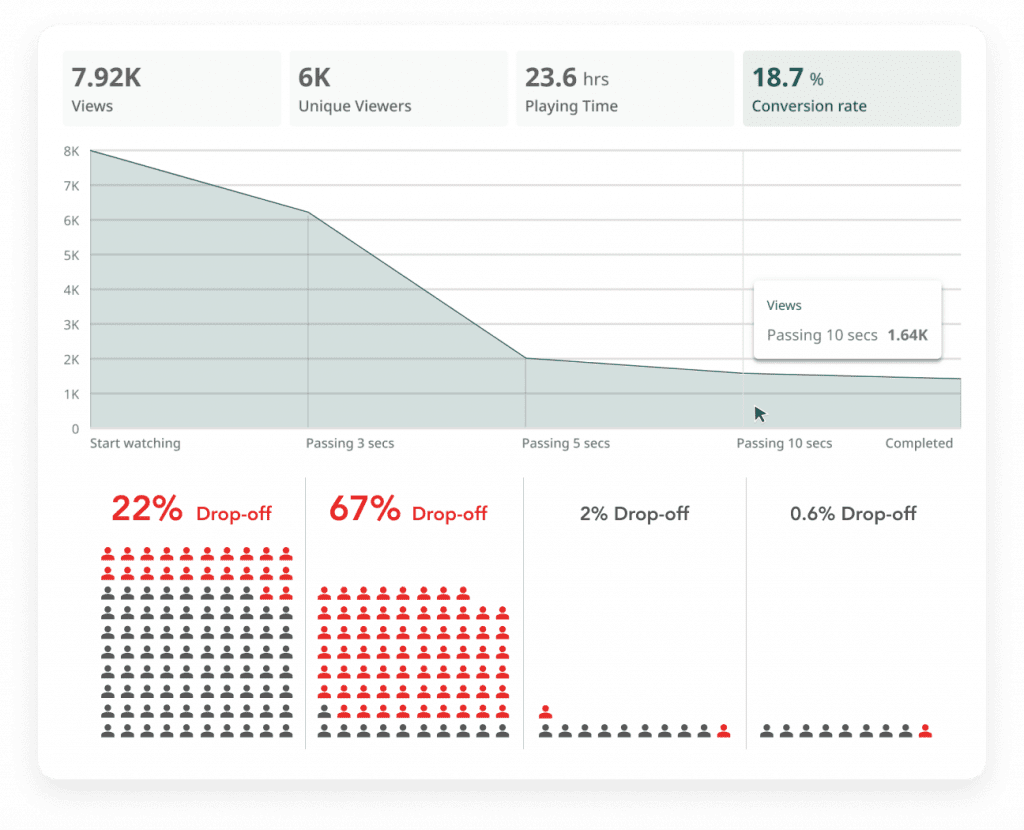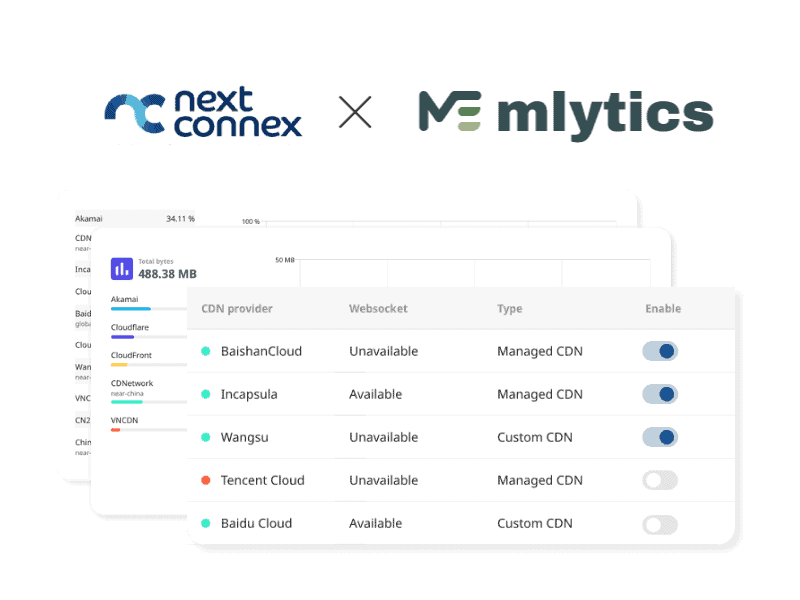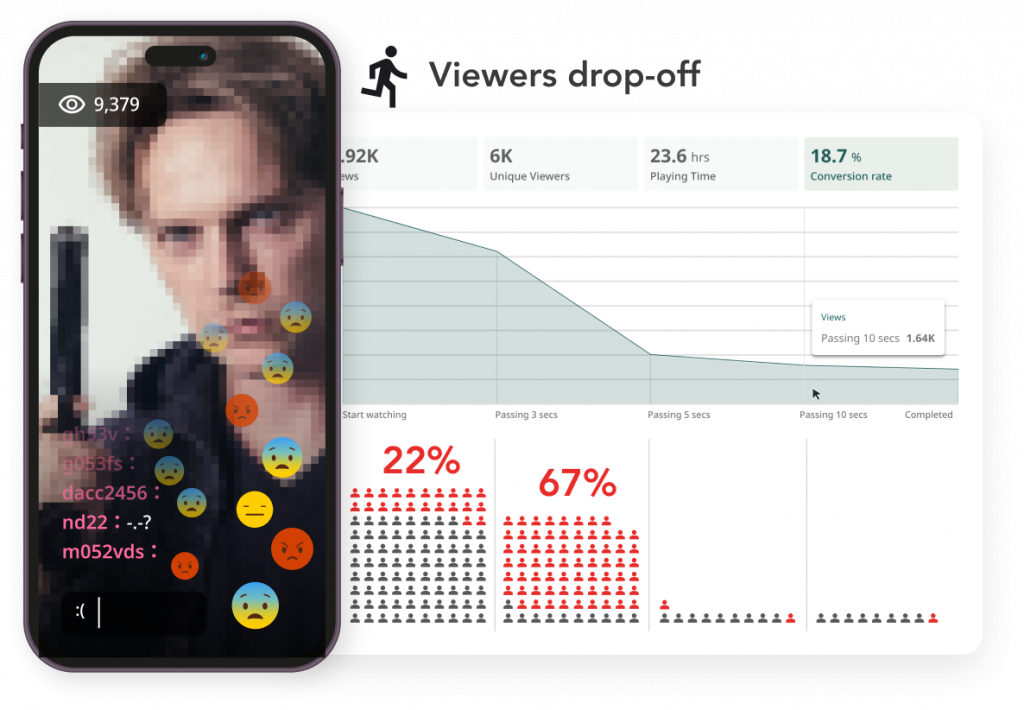This post is also available in: 简体中文
In today’s digital age, streaming services have become platforms for people to watch their favorite shows and movies. One of the KPIs for platforms is higher audience retention. However, maintaining viewer engagement throughout a streaming session can be challenging. One of the major problems that streaming providers face is viewer drop-off, which occurs when viewers abandon a video or streaming session before it ends.
This can result in lost revenue and decreased competitiveness in the industry. One of the solutions to this problem is in-stream switching, a feature offered by Mlytics Video Stream, which can significantly improve viewer retention and engagement.
A study by Conviva found that users who experience buffering are three times more likely to abandon a video. This emphasizes the importance of providing a consistent user experience for viewers. In-stream switching helps to address this issue by reducing buffering and providing a more optimal streaming experience. By doing so, providers can increase viewer satisfaction and engagement rates, leading to more revenue.
The Importance of Audience Retention
Maintaining viewer engagement is essential for the success of any streaming service. High audience retention rates not only result in increased revenue but also help to build a loyal fan base. In contrast, low viewer retention rates can have a detrimental effect on a streaming service’s reputation and overall competitiveness.
In conclusion, viewer retention is crucial for the success of any streaming service. By providing a high-quality viewing experience and utilizing features such as in-stream switching, streaming providers can improve viewer retention rates, increase revenue, and maintain a positive brand reputation.
Why Viewer Drop-off Occurs?
Viewer drop-off can occur due to a variety of reasons, including buffering video issues, poor video quality, or an unsatisfying viewing experience. These issues can lead to viewer frustration, which may cause them to switch to another streaming service that provides a better viewing experience. One of the main reasons for viewer drop-off is buffering issues. When a video pauses to buffer, it disrupts the viewer’s experience, causing them to lose interest and potentially leave the streaming session.
In summary, viewer drop-off is a significant problem for streaming providers, but Mlytics in-stream switching offers a powerful solution. By providing viewers with more control over their viewing experience and allowing providers to better understand viewer preferences, in-stream switching can help to improve engagement, retention, and revenue for streaming services.
Solution: In-stream Switching Feature
One of the solutions to the problem of viewer drop-off is in-stream switching, a feature offered by Mlytics Video Stream. This feature allows viewers to switch between multiple CDNs (content delivery networks) during a streaming session, ensuring that they receive a smooth and uninterrupted viewing experience.
To combat viewer drop-off, Mlytics Video Stream offers an in-stream switching feature that can significantly improve audience retention and engagement. This innovative feature allows viewers to switch seamlessly between different content delivery networks (CDNs) during a streaming session. By doing so, Mlytics Video Stream ensures that the streaming experience remains smooth and uninterrupted, even if there are issues with the CDN being used.
Mlytics Video Stream’s in-stream switching feature offers several benefits that can help improve viewer retention:
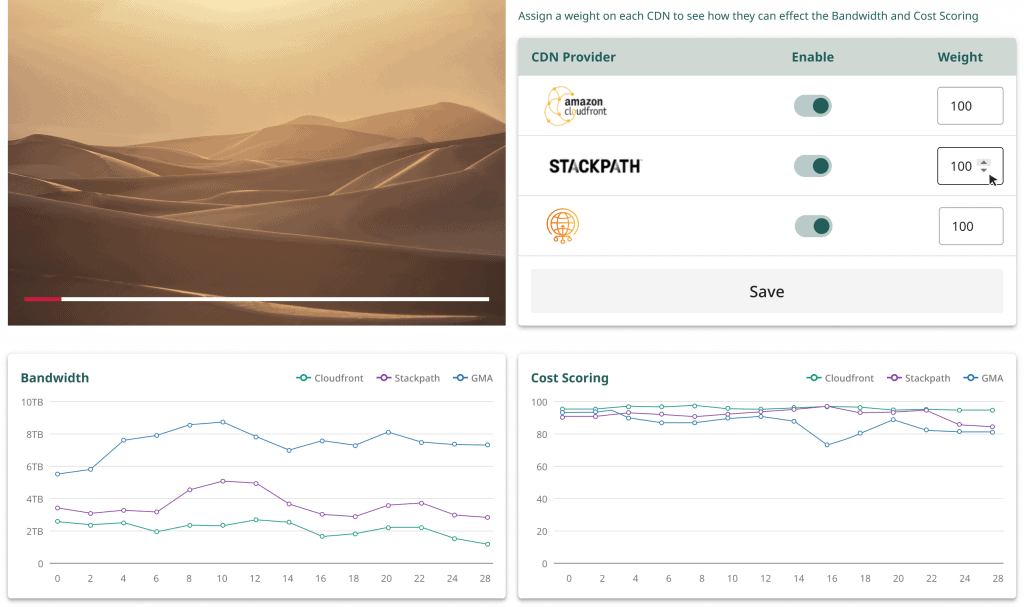
- First, it eliminates buffering and other playback issues that may cause viewers to become frustrated and abandon a streaming session. With in-stream switching, viewers can switch to a different CDN if there are any issues with the current one, ensuring a seamless streaming experience.
- Second, in-stream switching ensures that viewers can continue watching their content even if the current CDN experiences a sudden outage or slowdown. Mlytics Video Stream’s intelligent algorithm detects any issues with the current CDN and switches to a different one automatically, without any interruption to the viewer’s experience.
- Third, in-stream switching also allows streaming providers to optimize their CDN usage. By using multiple CDNs, providers can ensure that their content is delivered efficiently and effectively to viewers all around the world. Mlytics Video Stream’s intelligent algorithm constantly monitors the performance of each CDN and switches to the best one in real-time, ensuring that the streaming experience is always optimal.
- In addition, stream providers can easily integrate Mlytics Video Stream’s JavaScript API into their HTML5 player to start delivering the most optimal streaming experience to their viewers. This platform also provides detailed analytics and control, allowing providers to fine-tune their delivery methods and optimize costs.
How In-stream Switching Works
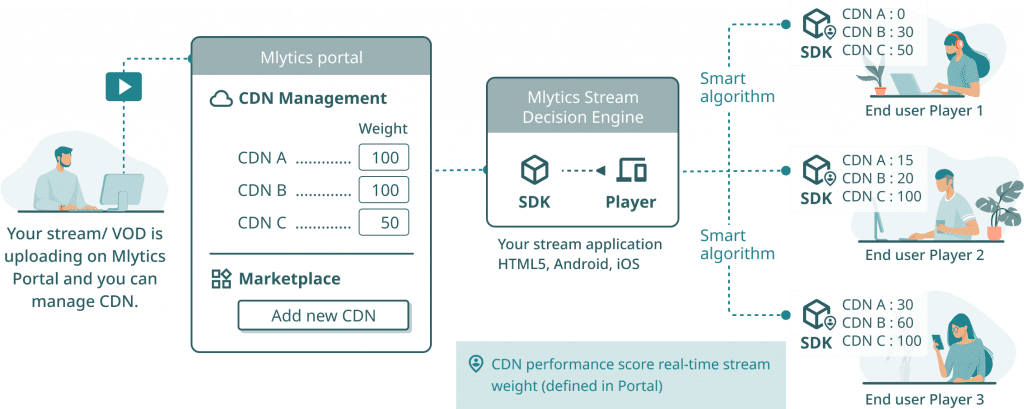
In-stream switching works by detecting network congestion and packet loss, two common causes of buffering issues and poor video quality. Once detected, Mlytics Video Stream automatically switches the viewer to another CDN, ensuring that the viewer’s experience remains uninterrupted.
Mlytics Video Stream’s in-stream switching feature uses advanced algorithms to monitor the viewer’s network conditions and detect any issues that may affect their streaming experience. The system can detect network congestion, which occurs when there is too much traffic on the network, causing data packets to be delayed or lost. It can also detect packet loss, which is the failure of one or more data packets to reach their intended destination.
When either of these issues is detected, Mlytics Video Stream’s in-stream switching feature immediately kicks in. The system switches the viewer’s streaming session to another Content Delivery Network (CDN) that is less congested and can deliver the content more efficiently. This process happens seamlessly in the background, so the viewer is not aware that a switch has occurred.
By using in-stream switching, Mlytics Video Stream ensures that viewers have a smooth and uninterrupted streaming experience. This feature is particularly useful for live streaming events, where network congestion and packet loss can occur more frequently due to the high volume of traffic. In-stream switching helps to mitigate the risk of viewer drop-off during live events, which can be crucial for the success of a streaming service.
Also, load balancing is an essential of Mlytics Video Stream, as it helps to ensure that content is delivered quickly and reliably to users while also optimizing resource utilization and minimizing downtime.
Overall, Mlytics Video Stream’s in-stream switching feature is an essential tool for any streaming service that wants to improve viewer retention rates and offer a high-quality viewing experience. With this feature, streaming services can minimize the impact of network issues and provide a seamless streaming experience that keeps viewers engaged and coming back for more.
The Benefits of In-stream Switching
The benefits of in-stream switching are clear: it significantly improves viewer retention rates by eliminating buffering issues and ensuring that viewers have a seamless and uninterrupted viewing experience. In-stream switching is the ability to switch delivery methods (such as CDN, P2P, or hybrid) in real-time during a streaming session. With Mlytics Video Stream’s in-stream switching feature, streaming providers can increase viewer engagement, build a loyal fan base, and remain competitive in today’s crowded streaming market.
A significant advantage of in-stream switching is the flexibility it provides in delivery methods. For example, CDN delivery methods may be the most cost-effective for providers but may not provide the best user experience. P2P delivery methods, on the other hand, may offer a better user experience but can be more expensive. By being able to switch between delivery methods in real time, providers can balance user experience and cost to achieve the most optimal result.
Overall, in-stream switching is a valuable feature for streaming services that want to improve viewer retention rates, reduce CDN costs, and provide a better user experience for their viewers. Mlytics provides smooth and reliable video delivery to your audience. With Mlytics Video Stream’s in-stream switching feature, streaming providers can stay competitive in a crowded market and continue to grow their audience.
Conclusion
Mlytics Video Stream’s in-stream switching feature is a powerful tool for streaming providers looking to improve viewer retention and engagement. By providing a seamless streaming experience, reducing downtime, and optimizing CDN usage, Mlytics Video Stream can help providers stay competitive in the ever-evolving streaming industry.
